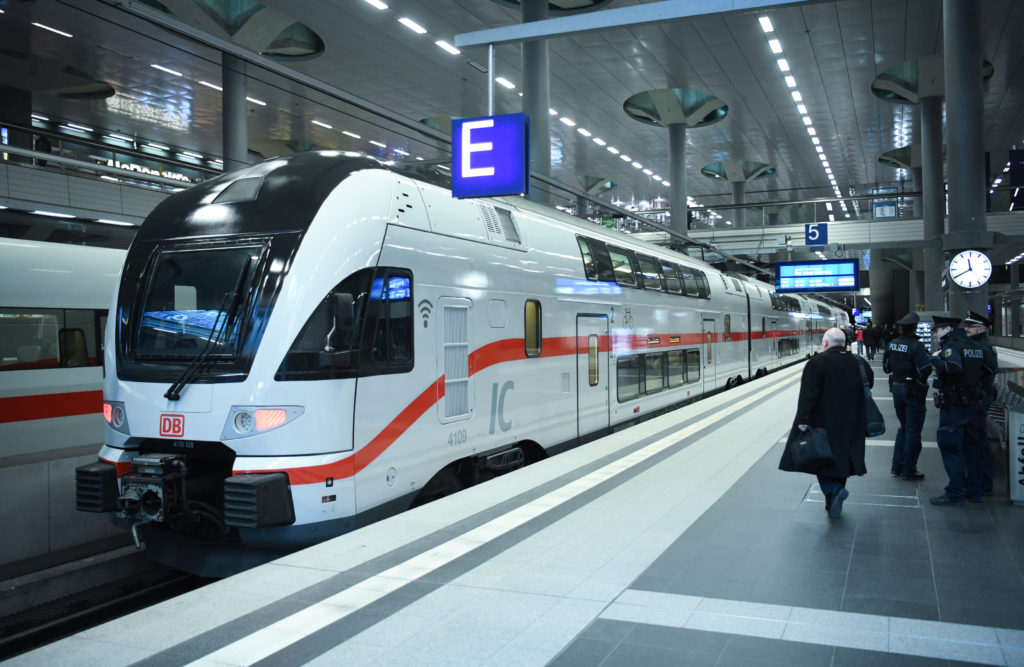Going five pages back this time:
Will reliability improve substantially with Lakeshore service still using CN track with no priority?
The two main drivers of operational interference between two types of trains on a multiple-tracked railway line are: 1) the difference in average speed between the different train types and 2) the length of the headways between two subsequent departures of the same train type with a positive relationship in the case of 1) and a negative relationship in the case of 2).
By being finally able to accept the travel time increase associated with additional stops and to focus the schedules around the needs of the Lakeshore communities, the average speed will invariably decrease while having slightly less trains spaced out more evenly over the day should ease conflicts on both measures, thus resulting in a schedule which works with more people. Therefore, yes, I do expect service reliability on the Lakeshore services to improve substantially, even without obtaining priority.
And while I can see substantial gains for most communities, this seems to be proportionally less gains on frequencies for Kingston. And a longer trip time. But a better spaced scheduler and departure ms originating in Kingston.
You seem to be mostly concerned about how feasible commuting from Kingston to Toronto will become. The big opportunity with the refocusing of Lakeshore services on the needs of the Lakeshore communities is that it will dramatically improve the commutability for people living in places like Port Hope, Cobourg, Trenton, Belleville, Napanee or even Brockville, but
working in Kingston (and the same will be true in the opposite direction).
Have a look at the kind of InterCity trains in the Netherlands
@reaperexpress has mentioned [Edit: not:
marveled about, my apologies to
@reaperexpress] and take the route from Amsterdam to Maastricht (which is with 218 km about the longest distance you can travel in the country) and you will notice that none of the 7 intermediary stops is skipped by any train and the same is true with the three stops between Amsterdam and Eindhoven (the countries' fifth-largest city). In fact, the average speed for Amsterdam&Maastricht and Amsterdam&Eindhoven is virtually the same (90.2 and 90.4 km/h) and inferior not just to the fastest (254 km in 2:09 equals 118.1 km/h) train offered between Kingston and Toronto in the last pre-Covid schedule, but also to every single departure except for Train 651 (254 km in 2:53 equals 88.1 km/h):
Source: European Rail Timetable (Summer 2016 Edition)
Granted, there probably aren't that many passengers commuting between Maastricht and Amsterdam, but you can bet that the number of commuters between Eindhoven and Maastricht, Utrecht or Amsterdam (and in all cases: in both directions) is considerable.
That's an interesting point. My knee-jerk reaction as a demanding spectator is, why isn't VIA configuring exclusively around 100 mph (the Challengers may lead to this) and then squeezing every possible second out of its timings?
They did just so, actually, back when the Metropolitan was conceived. Didn't last.
If it turns out that due to other considerations, (such as freight interference, dispatching through crossovers, slow orders, etc) that 100 mph capability just can't be leveraged, well that really is something my mindset just hasn't processed.
Exactly, the time advantage is too insignificant (traveling at a constant speed of 100 mph only saves 1.2 seconds per km over a speed of 95 mph) to justify accepting additional fleet constraints, which both reduce your operational flexibility and ability to maximize the frequency and capacity you are able to offer with your existing fleet, especially since freight traffic and switching between tracks minimizes the length of the segments where you might actually be able to reach 100 mph.
One can be certain that the finance side of the business will point to the extra capitalization on this line, relative to CN's busier single track lines handling equal ton-miles. That certainly was my experience about managing capital. And railway management is pretty ruthless about forcing cuts to extract excess capital. I have too much respect for CN as a business to believe they don't work this way.
If VIA is paying CN enough for that excess capitalisation, it may be moot for now. But if VIA runs fewer trains, presumably paying much less, the financial considerations will prevail. In that equation, taking track out of service is a very likely scenario.
I would expect that the interference imposed by VIA's operations will decrease post-HFR by much more than by what its train frequencies (and thus TSA payments) will decrease. Also, the TSA payments of a passenger railroad with an operations budget of just over $500 million are certainly too insignificant
for a freight railroad with annual revenues worth $14.9 billion and costs worth $9.3 billion to motivate a decision which would drastically reduce the capacity and fluidity on probably the most important piece of their network (I wouldn't go as far as calling the
"Montreal-Toronto rail corridor [...] the busiest in North America", but the blockades early this year have certainly shown that it is absolutely essential to CN).
I really have to push back on this statement...... I believe it's factually incorrect. CN went to DPU on the Kingston Sub long before they did west of Toronto. A couple of the intermodal land barges from the west turn left at Doncaster and continue on to Montreal unaltered, as do grain and other unit trains. A key operational constraint CN experiences on the Kingston is the need to cross over VIA trains around long freights - the train handling required to slow a freight to crossover speed and the time required for a long freight to cross over and clear is unacceptable. So VIA has to be the one that slows down and crosses over. Trains on the Kingston Sub are every bit as long and heavy as elsewhere.
I concede that you might be correct in suspecting that the operational differences between its transcontinental line and its Montreal-Toronto-Chicago main axis are not as significant as I had suggested, but this doesn't change that you seem to take for granted that CN will single-track parts of the Kingston Subdivision - at a time where CN
invests heavily to do
the exact opposite along large segments of its other high-volume lines.
Touche. Perhaps some of us need a "we're just specators in the bleachers" disclaimer at the bottom of our posts.
Having said that, for most of my career I was the "what might go wrong" guy rather than the "let's all get on the bandwagon and shout rah-rah" guy. It worked for me.
And I think it is fair to articulate strong belief of probability. A lawyer friend recently lamented that people use the terms "shall, will, and may" interchangeably and incorrectly. Is there a single word that means "can't say for certainty, but pretty damn likely, if you ask me"?
I don't have a problem with anyone expressing a strong sense of what might happen in the future, but it becomes tiring to argue with someone when that strong sense seems to be based on barely more than gut feeling.
Respectfully, this is the paradigm that resurfaces over and over again through the decades with respect to VIA service...."a few more minutes travel time won't hurt anything.....". What other business lets itself think this way? One would expect that VIA would insist on and articulate its vision of how the service can be improved.
For Kingston-Lakeshore, the limitations of the relationship with CN need to be acknowledged but not celebrated or baked into planning. Limiting service on the Lakeshore may be an unavoidable tradeoff in the push for HFR, but I would not represent it as an improvement or even status quo. There must be an ability to grow that service.
- Paul
Firstly, I was not talking about adding extra minutes to increase padding, but the necessity to adjust run times accordingly when extra stops are added.
Secondly, it is unfortunately as pointless to try to explain to someone the advantages of a reorganized Lakeshore service if he doesn’t want to talk about anything else than the travel time (and the nominal number of frequencies) between Kingston and Toronto as it is to explain the advantages of HFR to someone who won’t talk about anything else than the travel time between Montreal and Toronto. We can obsess about travel times when we are designing HSR, but first we need to figure out how we can get to a point where we could possibly justify demands for HSR!
Thirdly, VIA has steadily grown (and basically doubled) its frequencies along the Lakeshore in the last thirty years. In the case that post-HFR Lakeshore frequencies turn out to be insufficient to satisfy demand, I don’t see why incrementally increasing the frequencies again would be more difficult with a timetable architecture which significantly decreases the friction between passenger and freight operations than it has been in recent years.





